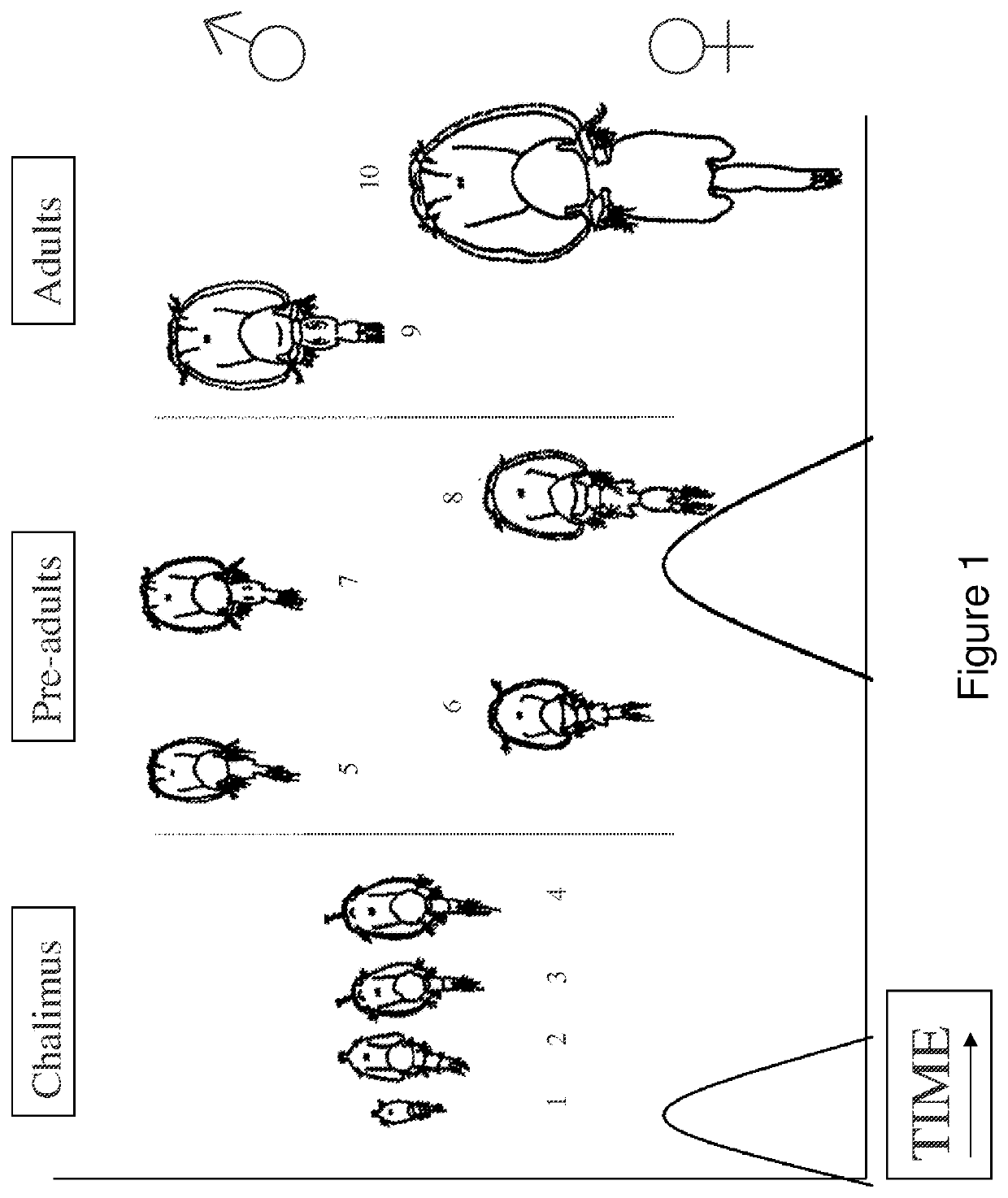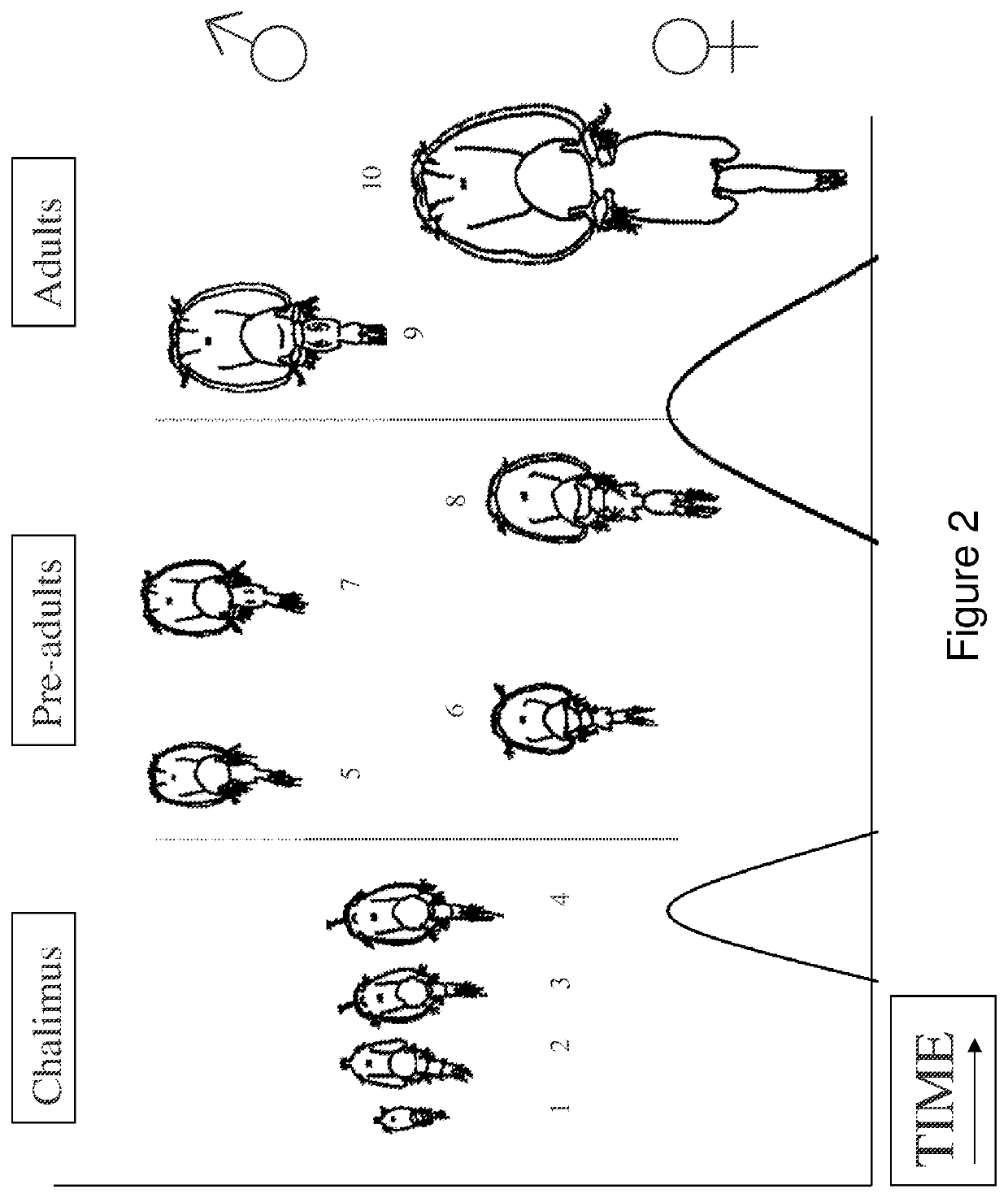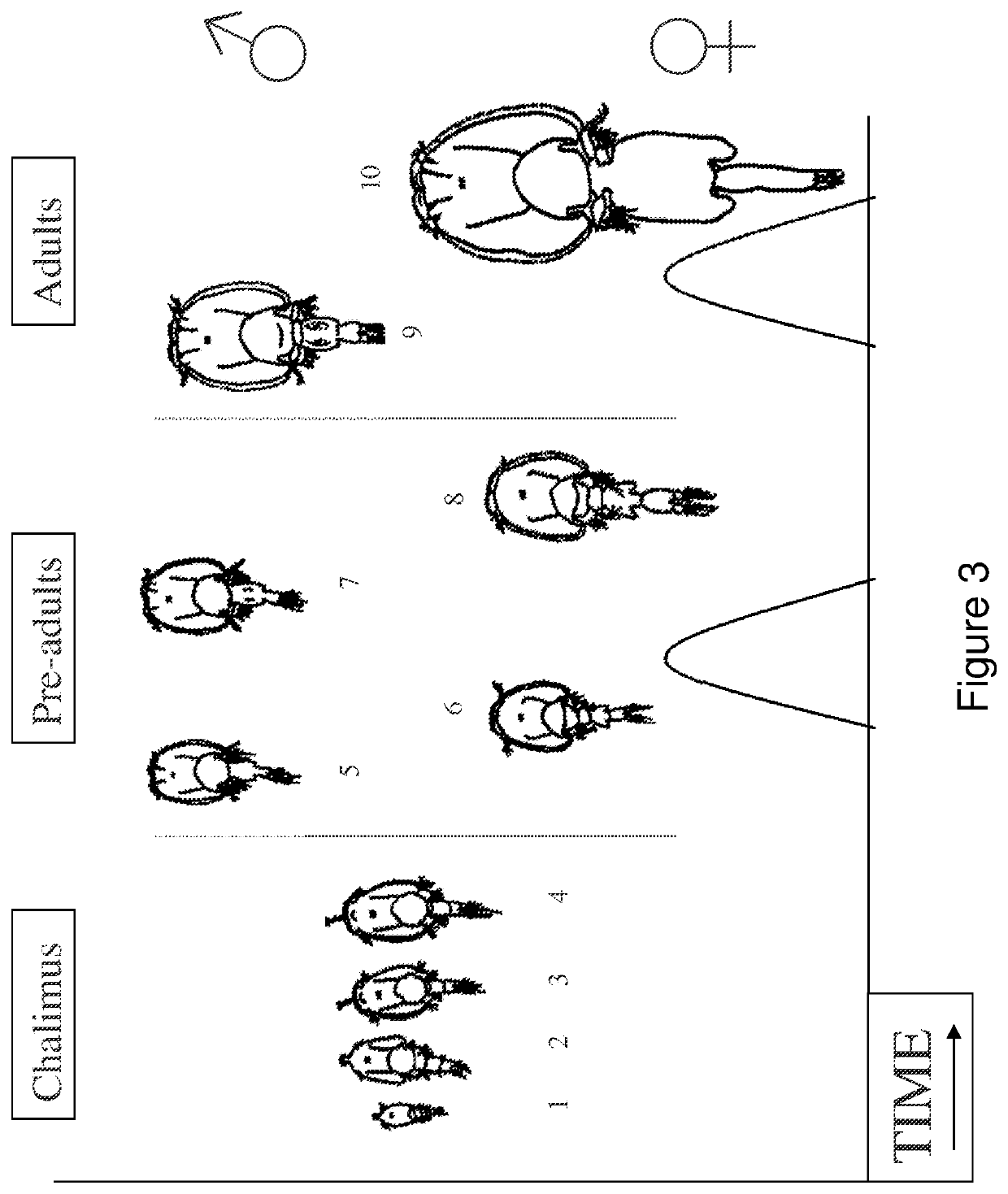Supplemented fish feed
a fish feed and supplement technology, applied in the field of supplemented fish feed, can solve the problems of significant production and economic losses, prone to sea louse infestation, ectoparasite-prone, etc., and achieve the effects of reducing the risk of contamination, potent insecticidal properties, and potent anti-ectoparasite effects
- Summary
- Abstract
- Description
- Claims
- Application Information
AI Technical Summary
Benefits of technology
Problems solved by technology
Method used
Image
Examples
Embodiment Construction
lass="d_n">[0109]The present invention will now be described in detail with reference to the following Figures which show:
[0110]FIG. 1: Development of attached L. salmonis over time. Lice challenge cohort II-Day−2.
[0111]FIG. 2: Development of attached L. salmonis over time. Treatment ends-Day 6.
[0112]FIG. 3: Development of attached L. salmonis over time. Sample 1-Day 13.
[0113]FIG. 4: Development of attached L. salmonis over time. Sample 2-Day 28.
[0114]FIG. 5: Sub-study A: Lice numbers (all stages) on day 13 (7 days post treatment).
[0115]FIG. 6: Sub-study A: Lice numbers (chalimus>pre-adults) on day 13 (7 days post treatment). Results show a ˜92% reduction in numbers of chalimus developing to pre-adults.
[0116]FIG. 7: Sub-study A: Lice numbers (pre-adults>adults) on day 13 (7 days post treatment). Results show a small reduction in numbers of pre-adults developing to adults.
[0117]FIG. 8: Sub-study A: Lice numbers on day 13 (adult male vs all females: 7 days post treatment). The results...
PUM
 Login to View More
Login to View More Abstract
Description
Claims
Application Information
 Login to View More
Login to View More - R&D
- Intellectual Property
- Life Sciences
- Materials
- Tech Scout
- Unparalleled Data Quality
- Higher Quality Content
- 60% Fewer Hallucinations
Browse by: Latest US Patents, China's latest patents, Technical Efficacy Thesaurus, Application Domain, Technology Topic, Popular Technical Reports.
© 2025 PatSnap. All rights reserved.Legal|Privacy policy|Modern Slavery Act Transparency Statement|Sitemap|About US| Contact US: help@patsnap.com



